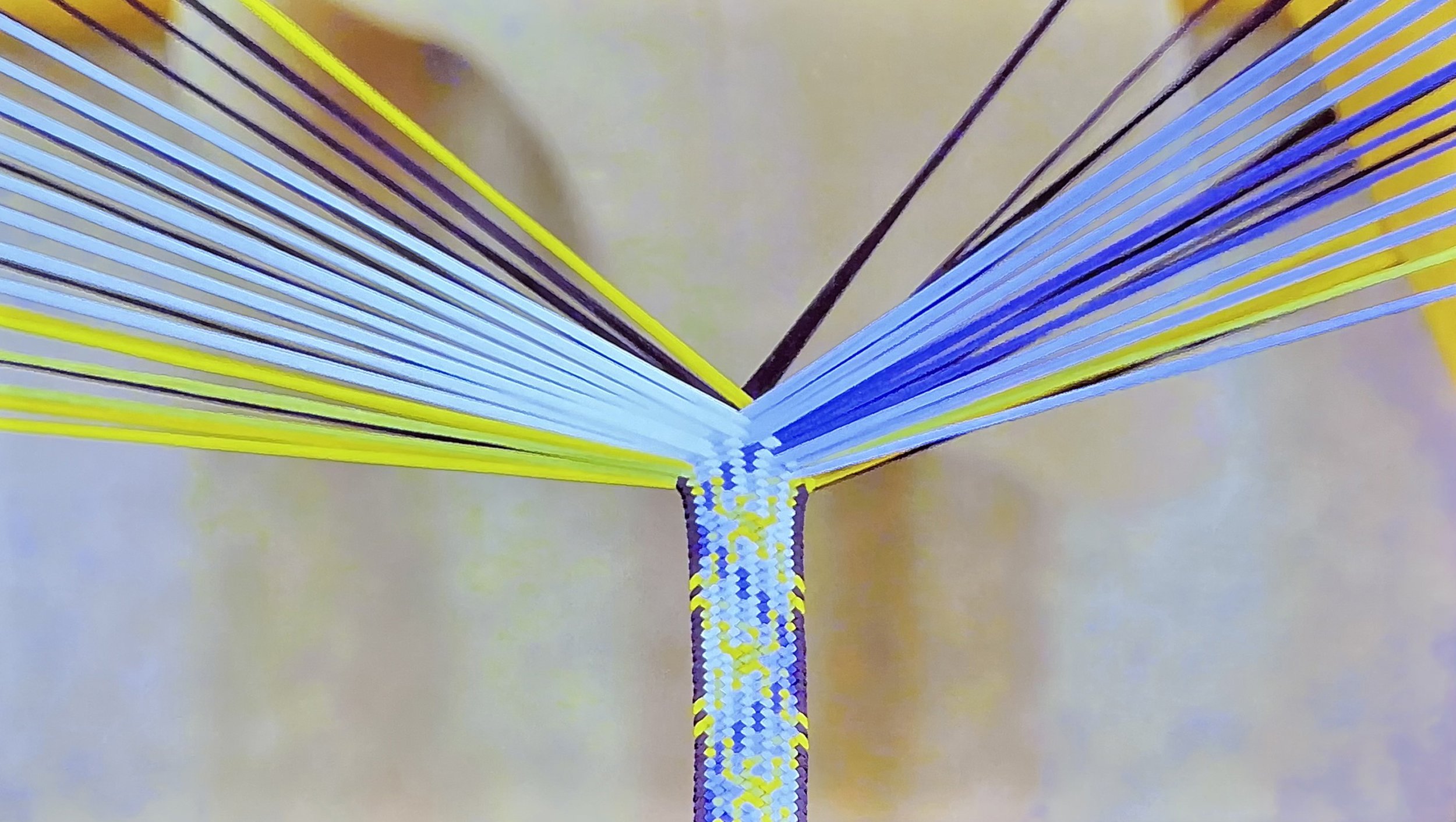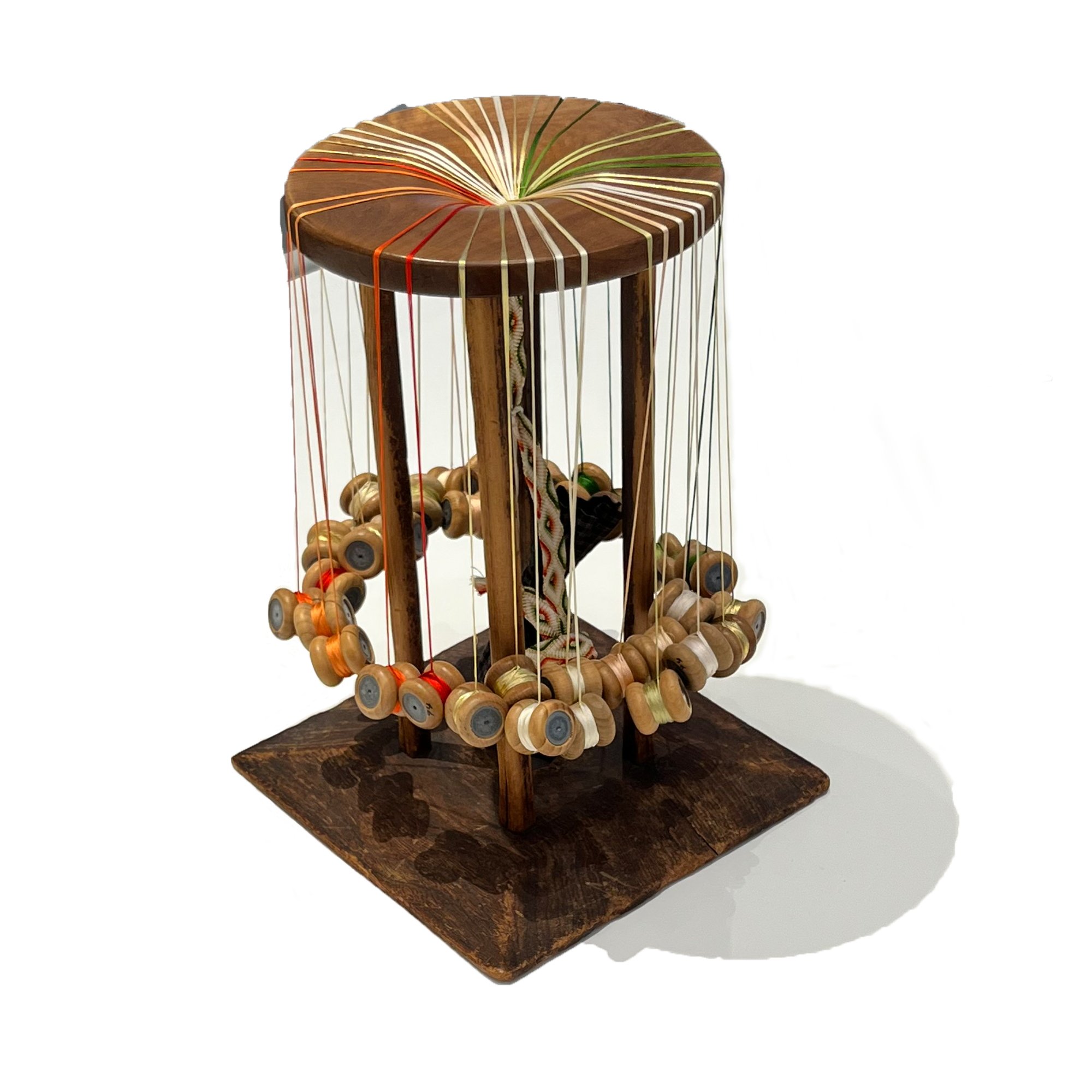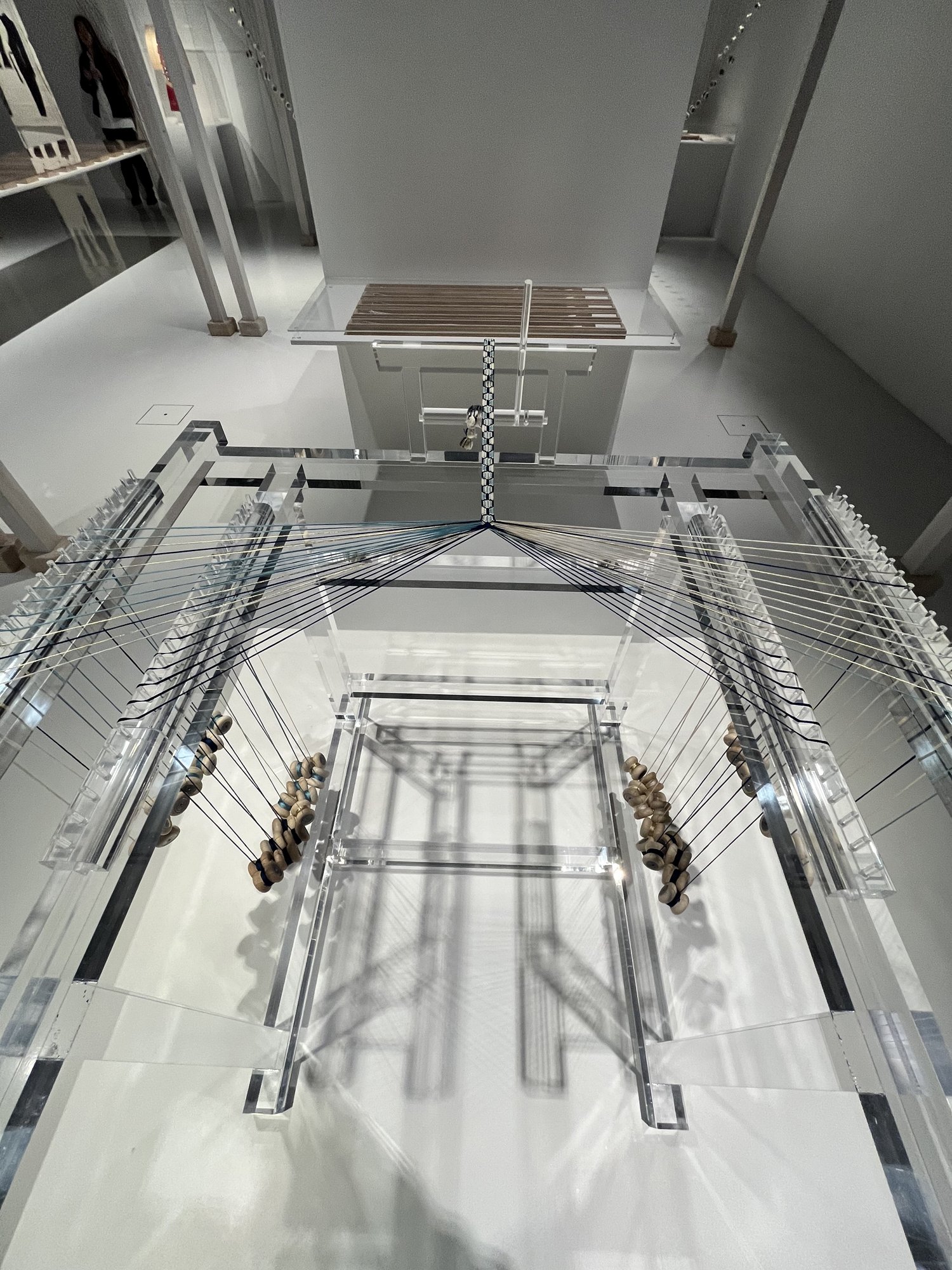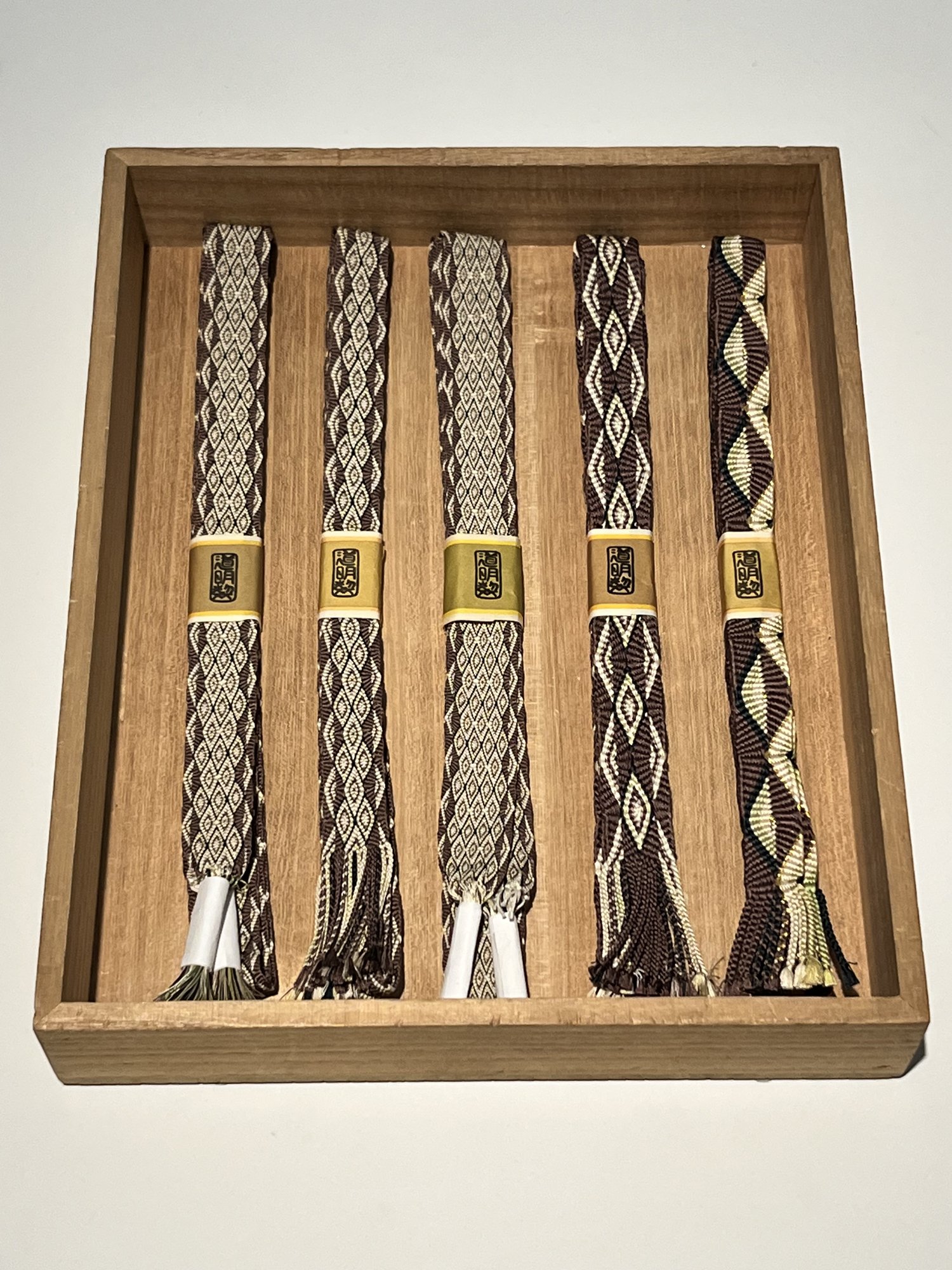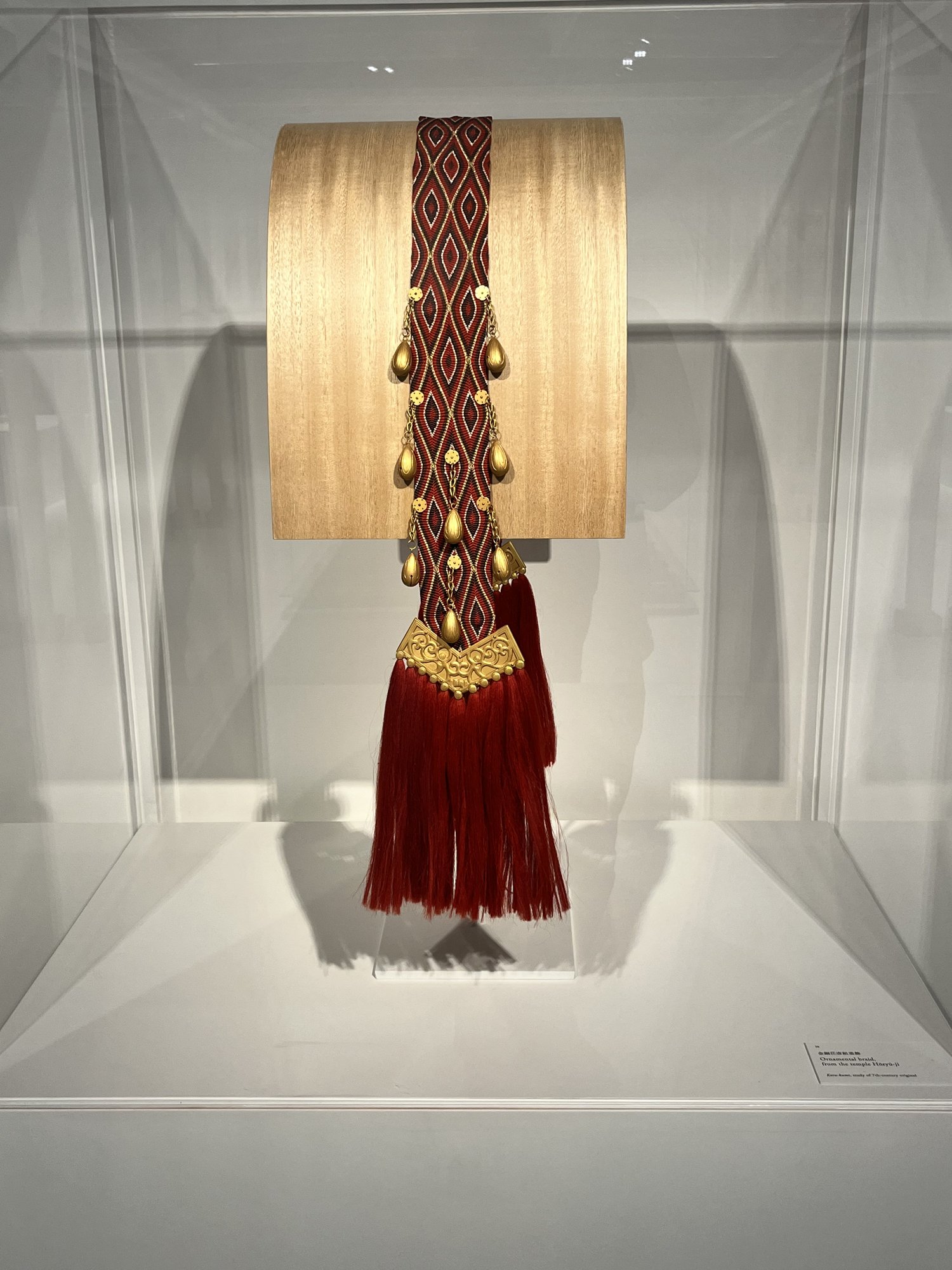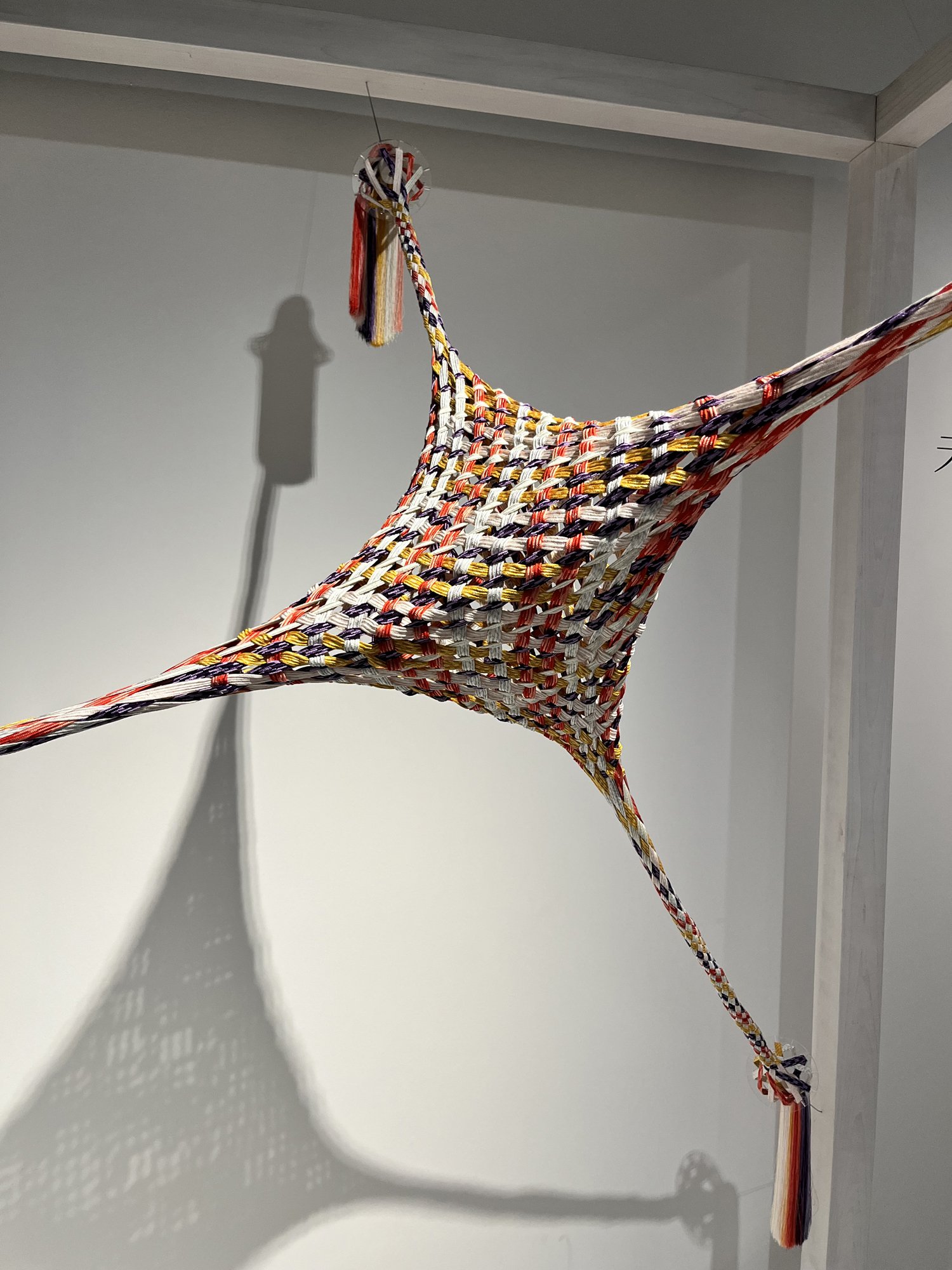Kumihimo braid under construction in blues and bright yellow
I recently visited a wonderful exhibition of Kumihimo braiding at Japan House in London. I took a few photos and have included some notes about the exhibition for those of you who cannot visit.
If you are able to attend in person, I would highly recommend you do. Japan House is also the repository of a fine selection of modern Japanese crafts and has a super restaurant upstairs and a small cafe on the ground floor.
Their exhibitions are free to enter but you should book a ticket on their website first.
What is Kumihimo?
Kumihimo, ‘joined or constructed threads’ are finely braided cords made from dyed spun silk. Kumihimo was introduced to Japan with Buddhism, 1500 years ago.
The Japanese craftspeople working with Kumihimo soon made it their own, making sophisticated and highly technical designs. An early innovation was the creation of the standard square cord or “Kaku-gumi”, a thick type of Kumihimo that is used as the building block to form more complicated patterns. Single cords can be connected together using carefully devised Kumihimo techniques that make the individual elements inseparable. Two, four, six and even eight cords can be combined together to make very complex patterns.
Japanese spun silk thread skeins used for Kumihimo braiding in greens and pinks
In recent times. Kumihimo has been associated with “obijime’, the decorative cord that secures the obi sash on a woman’s kimono but, in the past, braids were used to lace together flexible leather armour and in the exterior mountings for swords as well as to bind precious sutras in Japanese Buddhist temples.
Ornamental knots made from Kumihimo braid known as ‘kazari-musubi’ or blossom knots, were tied in the shape of flowers and used generally for decoration but also in ‘iri-himo’, the cords used to close neck openings to garments in the Heian period (794-1185 CE).
A selection of dyed spun silk threads ready to be wound onto bobbins for Kumihimo braiding
Process
Spun silk threads are dyed a range of beautiful colours and transferred onto bobbins. The braiding itself is either done on a round stand or “Marudai”, which has the appearance of a stool with a hole in the middle , a bit like a very large French knitting maker! The bobbins’ threads are tied to a central cord suspended from a weight that hangs down from the centre of the stand. Braiding is accomplished by swapping two or more braids over from one side to the other in a set order to create the pattern.
Marudai (round stand) for Kumihimo
This type of stand is for Beginner’s and typically makes round cord, although complex patterns in different colours are made with this stand. I worked some Kumihimo braiding on my first trip to Japan. It is a very slow process!!
Takadai (tall stand) for Kumihimo
The Takadai or “tall stand” shown here is much more like a loom than a stand. Threads are crossed to build the pattern and beaten tightly together with a bamboo tool called a “hera’. The two thread holders on each side are then moved down, presenting the next set of bobbins to be swapped over.
This type of stand is used for braids with a high thread count and is often used to make flat braids.
Examples of braids
A selection of Kumihimo braids
Ornamental Kumihimo braid in red and gold thread from the temple of Horyu-Ji in Japan
Yusoku Kumihimo Domyo (the craftspeople of the Domyo workshop)
Branching and merging Kumihimo to make very strong interconnected geometrics shapes
The Domyo workshop, founded in Tokyo in 1652 CE, has been making Kumihimo braids and, following extensive research has studied, restored and replicated nearly all known Kumihimo braids in Japan, a truly impressive feat. The foundation is currently led by Domyo Kiichiro, under whose guidance (and with the University of Tokyo) is researching how to use cellular materials with differential geometry and polyhedral packing to make very strong linkages which can be deployed in the real world.
Kumihimo silk thread wound onto bobbins prior to braiding on a stand
Two examples of braided Kumihimo sashes from the Shosion Repository
